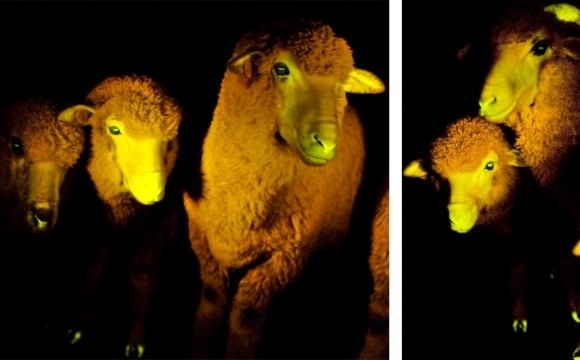

Elmo's fire behaves differently in airborne objects versus grounded structures. In an August 2020 paper, MIT demonstrated that St. In 1751, Benjamin Franklin hypothesized that a pointed iron rod would light up at the tip during a lightning storm, similar in appearance to St. Elmo's fire to fluoresce with blue or violet light this is similar to the mechanism that causes neon lights to glow, albeit at a different colour due to the different gas involved. The nitrogen and oxygen in the Earth's atmosphere cause St. Sharp points lower the necessary voltage because electric fields are more concentrated in areas of high curvature, so discharges preferentially occur and are more intense at the ends of pointed objects. The magnitude of the electric field depends greatly on the geometry (shape and size) of the object. A local electric field of about 100 kV/m is required to begin a discharge in moist air. Elmo's fire are present during thunderstorms, when high-voltage differentials are present between clouds and the ground underneath. The electric field around the affected object causes ionization of the air molecules, producing a faint glow easily visible in low-light conditions. Elmo's fire is a reproducible and demonstrable form of plasma. The phenomenon, which can warn of an imminent lightning strike, was regarded by sailors with awe and sometimes considered to be a good omen. The intensity of the effect, a blue or violet glow around the object, often accompanied by a hissing or buzzing sound, is proportional to the strength of the electric field and therefore noticeable primarily during thunderstorms or volcanic eruptions.

It has also been observed on the leading edges of airplanes, as in the case of British Airways Flight 009. Elmo's fire-also called Witchfire or Witch's Fire -is a weather phenomenon in which luminous plasma is created by a corona discharge from a rod-like object such as a mast, spire, chimney, or animal horn in an atmospheric electric field. Electrostatic discharge flashes across the windscreen of a KC-10 cockpit


 0 kommentar(er)
0 kommentar(er)
